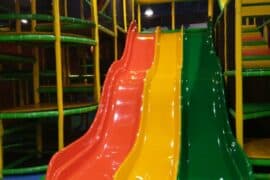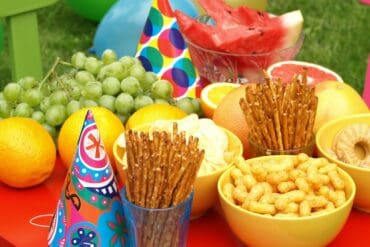Unlocking the Wonders of Aboriginal Dot Painting Art: A Parent’s Guide
Hello there, creative families! Are you ready to embark on a vibrant journey into one of the world’s oldest art forms, right from the comfort of your home? Aboriginal dot painting art is not only a delightful visual experience but also a fantastic opportunity to teach your kids about rich cultural traditions and storytelling.
What is Aboriginal Dot Painting?
Aboriginal dot painting is a revered art form originating from the Indigenous peoples of Australia. It’s characterized by intricate patterns of dots and is deeply tied to the artists’ connection to the land, their spirituality, and their community’s ancient stories (Dreamtime tales). By introducing your children to this unique art style, you’ll be opening doors to valuable cultural insights and creative expression.
The History and Significance of Aboriginal Dot Art
The origins of Aboriginal dot painting art date back thousands of years, with roots in sacred ceremonies. Initially, these artworks were created in the sand or on the human body, and over time, they transitioned onto canvases and other materials accessible today. These paintings are not merely decorative; each one tells a story and carries the wisdom of generations. Understanding the cultural significance can enrich your child’s artistic experience and appreciation.
Modern Aboriginal Art and Its Cultural Importance
In contemporary settings, Aboriginal art has seen a beautiful evolution, while still retaining its essence and purpose. Artists often use this expressive form to share their cultural heritage and comment on social issues. As you explore this art form with your children, it’s crucial to recognize and respect the cultural importance of these works and the artists behind them.
Engaging Children with Aboriginal Dot Art
Engaging your kids with Aboriginal dot art can be a delightful way to develop their fine motor skills, color recognition, and understanding of cultural diversity. Furthermore, the repetitive nature of creating dot patterns can be calming and meditative, offering a unique way to unwind and connect with each other.
Creating Your Own Aboriginal-Inspired Dot Art
While it’s essential to remember that traditional Aboriginal art is a representation of a culture that deserves our utmost respect, creating Aboriginal-inspired art at home can be done thoughtfully and sensitively. Here are some tips for getting started:
- Start with a story: Encourage your child to think of a story or concept they’d like to depict through their artwork. This aligns with the traditional narrative-driven nature of Aboriginal paintings.
- Choose your materials: You’ll need paint (acrylic works well), canvas or paper, and a variety of tools to create dots, such as the back of a brush, Q-tips, or even natural objects like sticks and leaves.
- Design and pattern: Discuss with your child how they can use dots to create shapes and forms that represent elements of their story.
- Color selection: Aboriginal art often features earthy tones reflecting the natural landscape, but modern interpretations can be vibrant and varied. Let your child’s imagination guide their color choices.
Creating Aboriginal-inspired dot art with your children is a fun way to connect with an ancient culture and bring a piece of its storytelling magic into your home. The act of sitting together, sharing stories, and dabbing dot after dot is a beautiful way to bond and create lasting memories.
Let’s dive a bit deeper into each step, so you can confidently guide your mini artists through the process of creating their own dot painting masterpieces.

5 Things Parents Should Know in Preparing for Aboriginal Dot Painting Art
As you prepare to delve into the world of Aboriginal dot painting with your children, there are several important factors to consider. This will ensure that the art-making experience is educational, respectful, and heaps of fun! Here are five key things to keep in mind:
- Educate on Cultural Respect: Before you begin, educate your family about the cultural background of Aboriginal art. Explain that these patterns are more than just decorative; they’re a form of communication and hold deep significance to the Indigenous Australian peoples. Teaching this respect for cultural traditions is paramount.
- Art Supplies with an Eco-Friendly Touch: Choosing environmentally friendly art supplies not only teaches kids about sustainability but also aligns with the Aboriginal ethos of respecting nature. Look for non-toxic paints, recycled paper or canvases, and natural materials for dotting tools like sticks, leaves, or seed pods.
- Preparation is Key: Before starting, ensure you have all materials ready and a suitable workspace. Cover surfaces with newspapers or a cloth to protect against paint spills. Having everything prepared means less hassle and more time for artistic exploration.
- Process Over Perfection: Encourage your children to enjoy the process of creating and expressing themselves rather than focusing on the end result. Aboriginal dot art is about storytelling and connection, not perfection. Remind them it’s their personal story that they’re illustrating, and there’s no right or wrong way to do it.
- Inspiration, Not Imitation: While getting inspired by the traditional Aboriginal dot art, remind your children to use their creativity to make something personal. It’s important to use this opportunity to create new, original work inspired by the Aboriginal style rather than copying specific traditional designs, which could be culturally insensitive.
Detailed Steps for Creating Aboriginal-Inspired Dot Art at Home
With a deeper understanding of what to keep in mind, let’s plunge into the practical steps of creating Aboriginal-inspired dot paintings with your kiddos:
Step 1: Storytelling Through Art
Begin by having a little story session. Encourage your children to come up with a tale — maybe an adventure, a memory, or even a dream. Explain how Aboriginal artists use symbols and patterns to tell stories about their culture, the land, and the animals they share it with. This will give depth to their artwork and mirror the narrative intent of Aboriginal artworks.
Step 2: Material Magic!
Once you have your story, gather your materials. Lay out a range of colors and let your children experiment with different tools to make dots. Sticks, cotton buds, or the eraser end of a pencil can be used to create varying dot sizes. Reiterate the importance of using sustainable and eco-friendly materials when possible!
Step 3: Explore Design and Patterns
Chat about how they can represent different parts of their story with colors and shapes. Aborigines use symbols like circles to represent campsites or curved lines to signify water. Let your kids invent their symbols, encouraging them to think about what each pattern or color represents in their story.
Step 4: The Colors of Our Earth
While deciding on colors, have your children look outside. What colors do they see in the world around them? Aboriginal artists traditionally used colors derived from nature such as ochres, charcoals, and chalk. While we might use brighter, store-bought colors, using natural tones can help create a link to the land, just like the traditional artists.
By now, your little artists are all set to start their dot painting adventure. As they begin to dot their canvases, you’ll witness the magic of art education at its best — filled with respect for cultural practices, a deeper understanding of the world, and a whole lot of family fun. Ready, set, dot!
For more great fun click here. For more information see here
Disclaimer
The articles available via our website provide general information only and we strongly urge readers to exercise caution and conduct their own thorough research and fact-checking. The information presented should not be taken as absolute truth, and, to the maximum extent permitted by law, we will not be held liable for any inaccuracies or errors in the content. It is essential for individuals to independently verify and validate the information before making any decisions or taking any actions based on the articles.




